The Challenge
"How do we facilitate health and wellness in the workplace?"
From here, our team created an interactive anti-fatigue mat designed for users transitioning to a standing desk. With integrated sensors, KeyMat can determine movement on the mat and estimate calories burned over the course of the day. We included LED breathing effects for a gradual analog feedback without the need of an app, but also mocked up a desktop app interface that can provide more detailed information and reports at the end of the work period. We designed this product to be non intrusive in a physical environment and in a user's productivity.
Awards:
Georgia Tech Convergence Innovation Competition - 1st
China-US Young Makers Competition - Finalists
Georgia Tech Convergence Innovation Competition - 1st
China-US Young Makers Competition - Finalists
Team: David Howard, Veronica Young, Alfonso Soldevilla
Role: Experience Design, Physical Design, Electronics Design and Fabrication, Programming
Research
Given the prompt, our team looked at health concerns in the workplace associated with the standard sitting desk environment. Noticing the recent trend in standing desks in the workplace, as well as the lesser known health risks and difficulties in using them, our team targeted pain points in this area for our design. While there are current solutions on the market to help alleviate pain in standing desks, none of them were intentional, or unobtrusive in the work environment. Our design was made to address these problems in a clean and simple design.
Physical Prototyping
Version 1 Prototype
Five touch sensors were made using copper tape "buttons" and wiring attached to EVA foam with a layer of PVC foam separating the two contact sides. The multiple foam layers added robustness to the electronics and comfort for the user. This foam sandwich was contained in a leather pouch for more stability and adding a small amount of scuff resistance. An Intel Galileo board was housed outside of the main body in this version to allow easier access to the central hub of electronics.
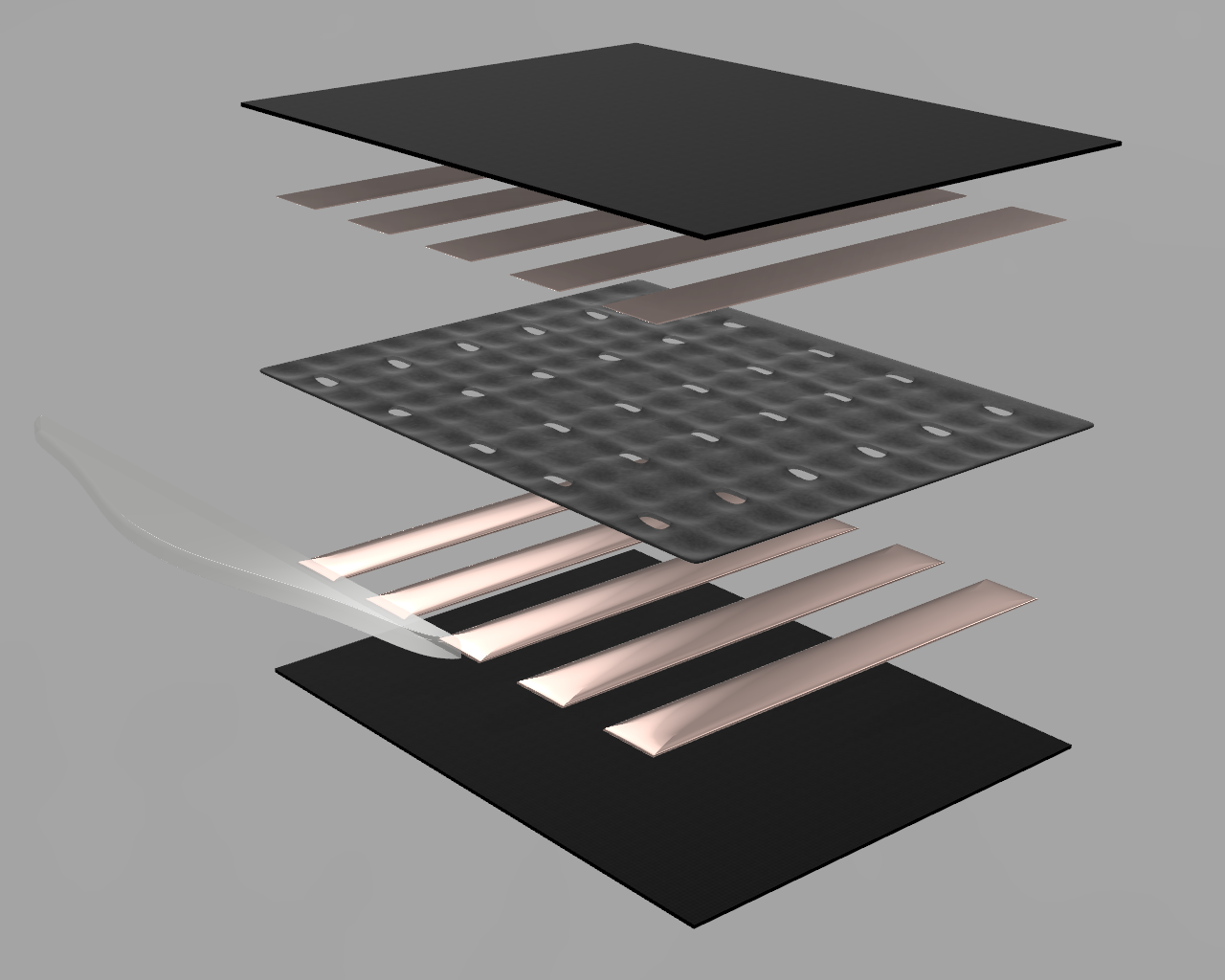

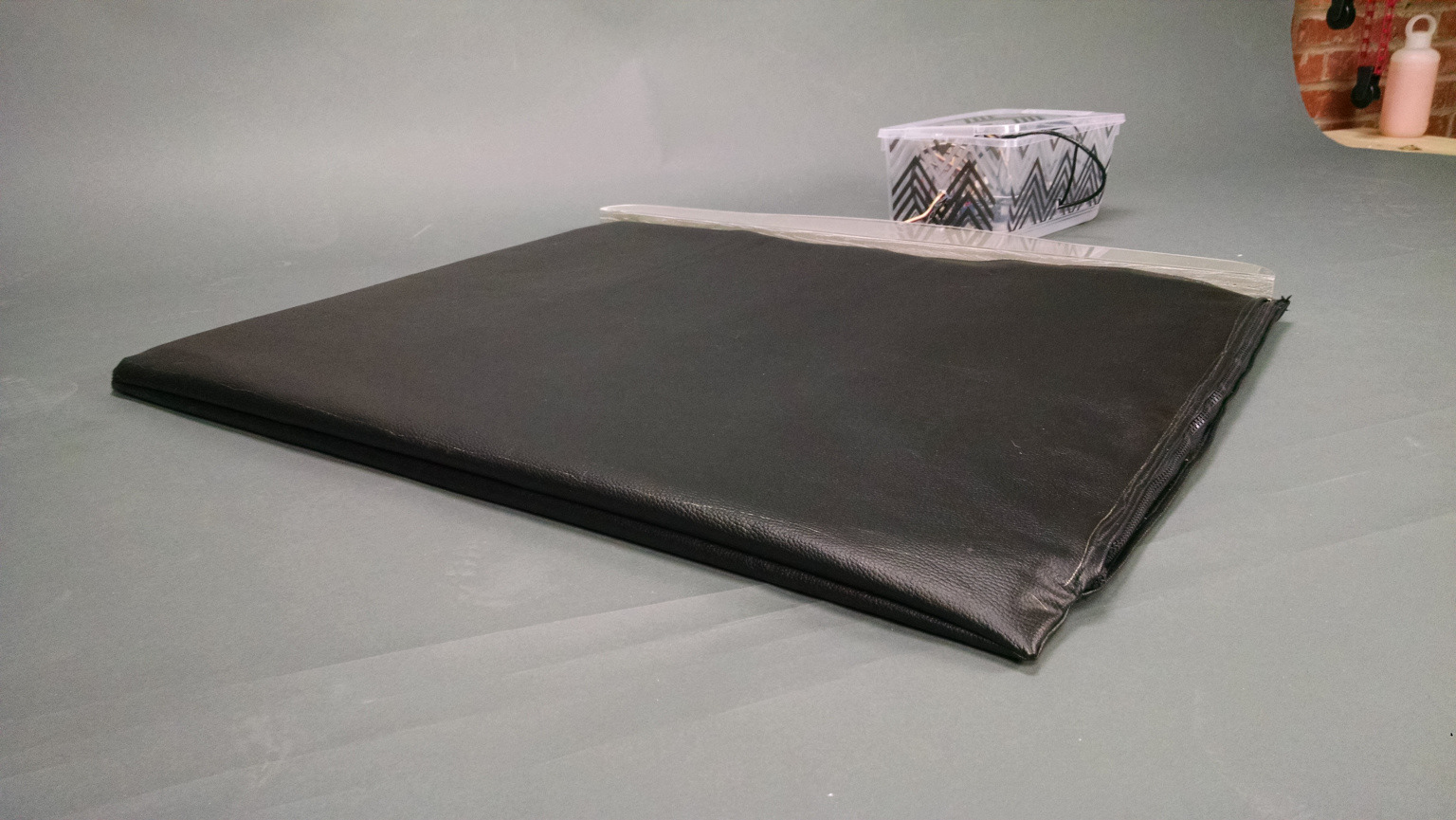
Version 2 Prototype
We expanded our 5 sensing areas into a 15 point grid with a redesign of the mat layout. The final model added an LED strip to give direct feedback to the user that can be integrated into the form. A Bubinga headboard was also created to house the Arduino Nano that is now driving the electronics. A magnetic door was added as well to allow for easier access to the board.
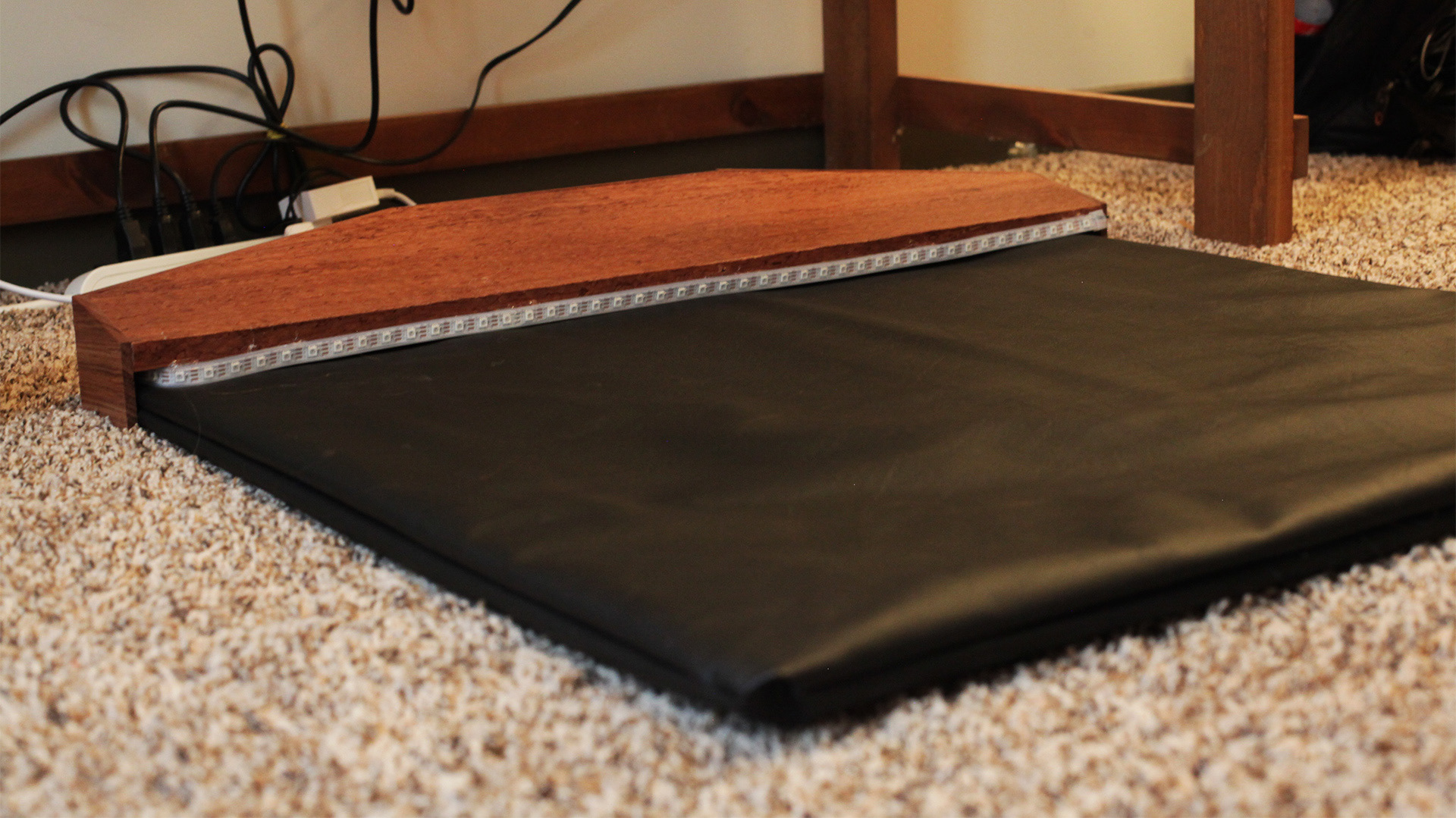
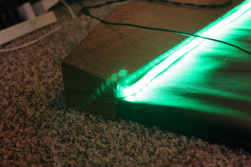
Keymat in Environment
We added gentle LED animations to create a subtle interaction with the user throughout the work period. Portions of the lights would change color based on where the user had their feet placed. We noticed that as the lights were changing, test participants would be more likely to fidget, whether they were paying attention to the lights or not.

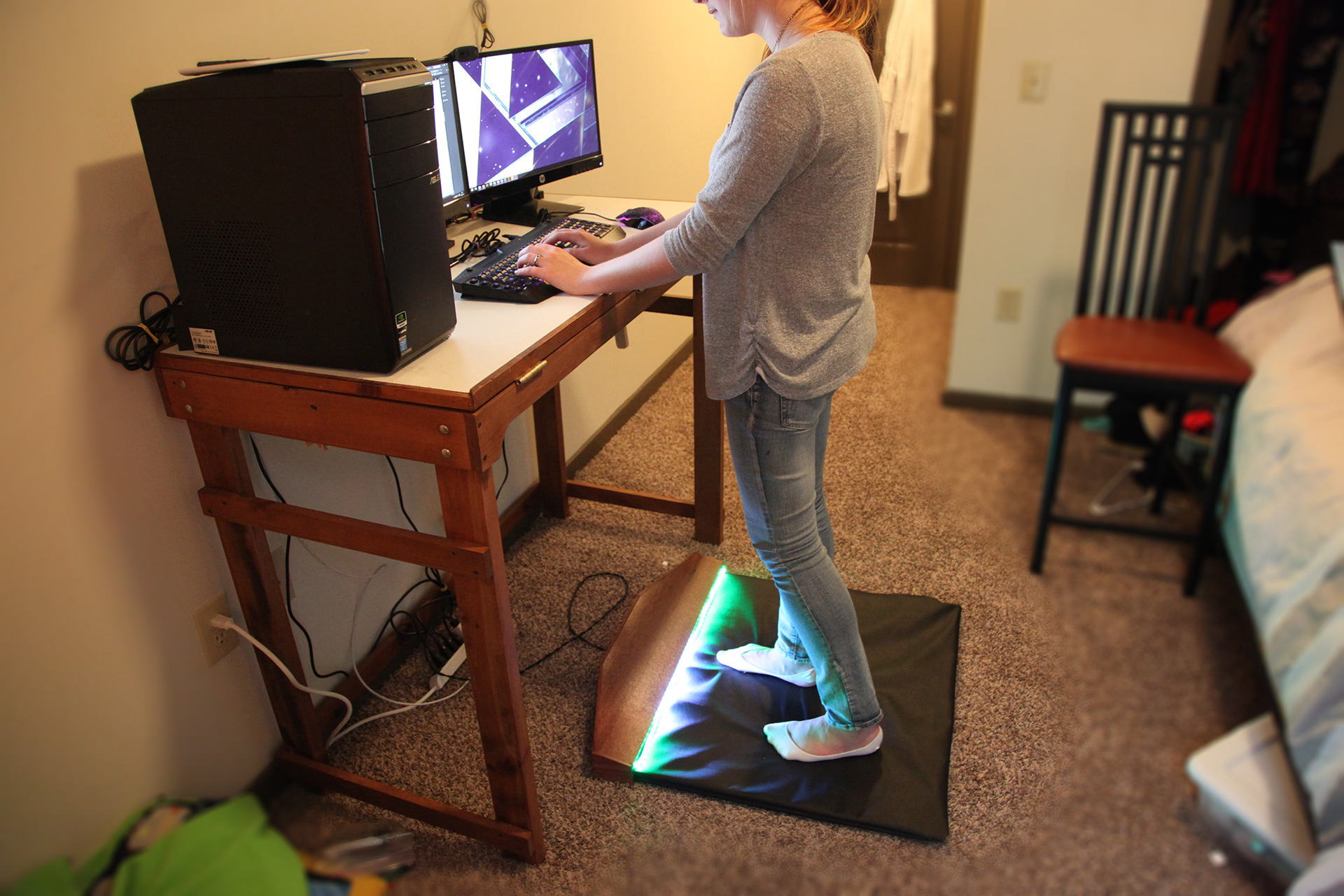
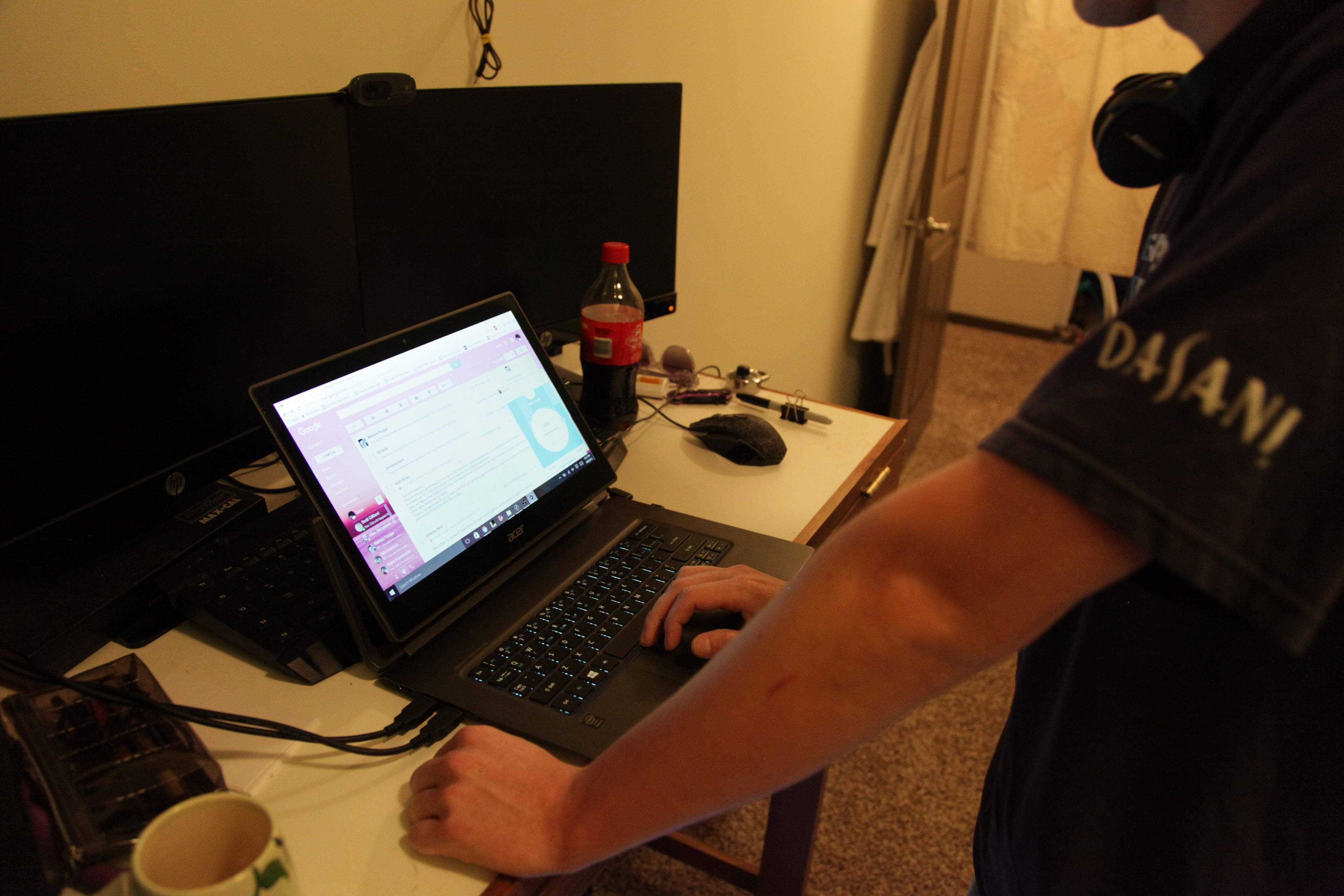
Desktop App
We designed a desktop app as an optional way to give feedback to the user. Made in Processing, this mockup would directly interact with data given by the Arduino and update accordingly throughout the day. Based on information given from the sensors, we can estimate the calories burned, similar to a treadmill. We also designed in a passive, responsive background to allow the user to see where they are standing, or moving to, on the mat.
We designed three main categories of feedback for the user. Goals and Calories could be viewed at any point in the day and get immediate feedback of progress being made at that moment.
Awards
What started as a class project ended up taking us halfway around the world in competitions hosted by Georgia Tech and another in Beijing. Shoutout to the team for helping take this project as far as we did.
Georgia Tech Convergence Innovation Competition - 2016 - 1st
China-US Young Makers Competition - 2016 - Finalists
China-US Young Makers Competition - 2016 - Finalists
References
http://multimedia.3m.com/mws/media/65833O/anti-fatigue-mats-an-ergonomic-solution-in-the-workplace.pdf
https://www.ccohs.ca/oshanswers/ergonomics/mats.html